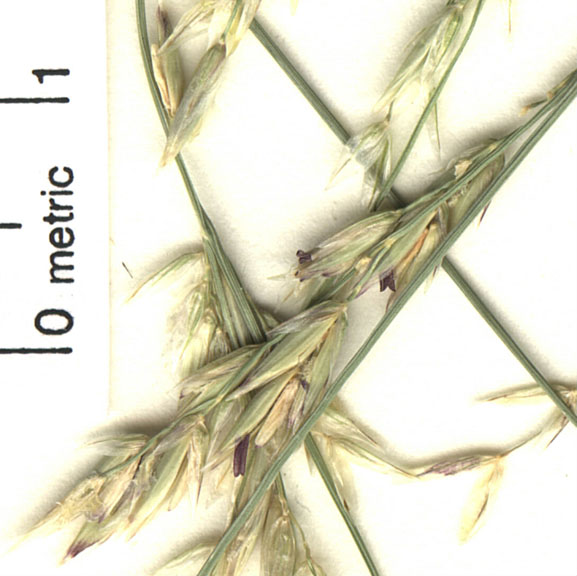Meliceae
|
Family: Poaceae |
Plants usually perennial, sometimes annual; cespitose, sometimes rhizomatous. Culms annual, not woody, not branching above the base; internodes hollow. Sheaths closed for their whole length or almost so; collars without tufts of hair on the sides; auricles sometimes present; ligules hyaline, glabrous, often lacerate, occasionally ciliate, those of the lower and upper cauline leaves usually similar; pseudopetioles absent; blades linear to narrowly lanceolate, venation parallel, cross venation sometimes evident; cross sections non-Kranz, without arm or fusoid cells; epidermes without microhairs, sometimes papillate. Inflorescences terminal panicles or racemes; disarticulation above the glumes and beneath the florets or below the glumes. Spikelets 2.5-60 mm, not viviparous, slightly to strongly laterally compressed, with 1-30 florets, proximal florets bisexual, distal 1-3 florets usually sterile, sometimes pistillate, sometimes reduced and amalgamated into a knob- or club-shaped rudiment; rachillas prolonged beyond the base of the distal floret. Glumes exceeded by the distal florets, shorter than to longer than the adjacent lemmas, mostly membranous, scarious distally, 1-11-veined, apices usually rounded to acute; florets laterally or dorsally compressed; calluses blunt, glabrous or with hairs; lemmas of sexual florets rectangular or ovate, mostly membranous, scarious distally, often with a purplish band adjacent to the scarious apices, (4)5-15-veined, veins not converging distally, often prominent, unawned or awned, awns not branched, apices entire to bilobed or bifid, awns straight, subterminal or from the sinuses; paleas from shorter than to longer than the lemmas, similar in texture, 2-veined, veins keeled, sometimes winged; lodicules 2, fleshy, usually connate into a single structure, without a membranous wing, truncate, not ciliate, not or scarcely veined; anthers 1, 2, or 3; ovaries glabrous; styles 2-branched, bases persistent, branches plumose distally. Caryopses ovoid to ellipsoid, longitudinally grooved or not; hila usually linear; embryos less than 1/3 as long as the caryopses. x = (8)9, 10. |

